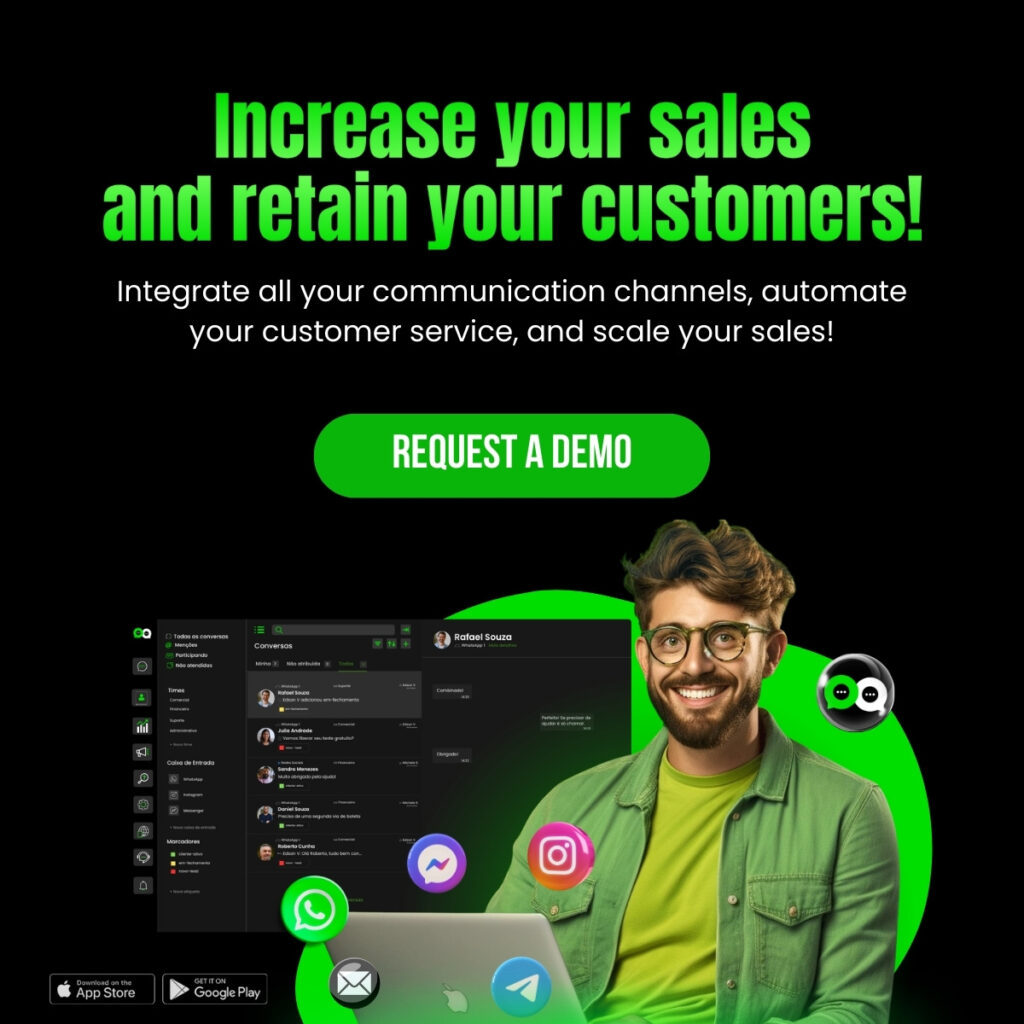Inbound Marketing is a powerful and effective strategy, especially in the B2B (Business-to-Business) context.
Unlike traditional marketing, which pushes products or services to customers, Inbound Marketing attracts potential customers by creating relevant and valuable content.
This comprehensive guide will explore what B2B Inbound Marketing is, how it works, and how to successfully implement it in your company.
What is B2B Inbound Marketing?
To understand the importance and effectiveness of Inbound Marketing in the B2B context, it is essential to start with a clear definition and an overview of its benefits.
Definition
B2B Inbound Marketing is a marketing strategy focused on attracting, engaging, and delighting other businesses (rather than end consumers) through the creation of relevant content, SEO optimization, social media engagement, and other tactics.
The goal is to provide value and build long-term relationships with business clients.
History and Evolution
Inbound Marketing emerged as a response to consumers’ growing aversion to intrusive marketing and interruptions.
With the evolution of the internet and social media, B2B companies began adopting Inbound Marketing to create a strong online presence and attract clients more organically and effectively.
Benefits of B2B Inbound Marketing
– Lead Generation: Attracts leads already interested in the products or services offered.
– Relationship Building: Builds trust and credibility through useful and relevant content.
– Cost-Effective: Generally cheaper than traditional marketing strategies.
– Measurable: Allows for performance measurement and strategy adjustment in real-time.
How Does B2B Inbound Marketing Work?
The functioning of B2B Inbound Marketing can be divided into several stages corresponding to the marketing funnel: attract, convert, close, and delight.
Stage 1: Attract
The first stage of Inbound Marketing is to attract visitors to your website or digital platform. This is done through various tactics aimed at increasing online visibility.
SEO (Search Engine Optimization)
SEO is crucial to ensuring your content appears in the top search engine results. This includes keyword optimization, creating quality content, and obtaining backlinks.
– Keywords: Identify and use relevant keywords your target audience searches for.
– Quality Content: Create informative and useful articles, blogs, e-books, and other content.
– Backlinks: Build backlinks from reputable sites to increase your site’s authority.
Content Marketing
Content marketing involves creating and distributing valuable content to attract and engage your target audience.
– Blogs: Write articles addressing your audience’s problems and interests.
– E-books and Whitepapers: Offer in-depth content that clients can download in exchange for contact information.
– Videos and Webinars: Use videos and webinars to explain complex concepts and showcase your expertise.
Social Media
Social media platforms are powerful for sharing your content and interacting with your audience.
– LinkedIn: Ideal for B2B marketing, use it to share articles, join groups, and interact with industry leaders.
– Twitter and Facebook: Share quick updates, company news, and links to your content.
Stage 2: Convert
After attracting visitors, the next step is to convert them into leads by collecting their contact information.
Landing Pages
Create optimized landing pages where visitors can provide their information in exchange for a valuable resource.
– Irresistible Offers: Offer e-books, whitepapers, webinars, or other valuable resources.
– Simple Forms: Keep contact forms short and easy to fill out.
Calls to Action (CTAs)
Use effective CTAs to guide visitors to take specific actions, such as downloading a resource or signing up for a webinar.
– Clarity and Persuasion: Ensure CTAs are clear and compelling.
– Strategic Positioning: Place CTAs in visible and strategic locations on your site and content.
Stage 3: Close
The closing stage involves nurturing leads until they are ready to become customers.
Email Marketing
Use email marketing campaigns to stay in touch with leads and provide additional information to help them progress through the sales funnel.
– Segmentation: Segment your email list based on leads’ interests and behaviors.
– Personalized Content: Send personalized emails with relevant content and specific offers.
Marketing Automation
Automate marketing processes to nurture leads efficiently.
– Automated Workflows: Create workflows that send automatic emails based on specific lead actions.
– Lead Scoring: Assign scores to leads based on their interactions to identify those ready to be approached by the sales team.
Stage 4: Delight
The final stage is to delight customers to turn them into brand promoters, ensuring retention and loyalty.
Customer Support
Offer exceptional customer support to ensure satisfaction and quick problem resolution.
– Quick Responses: Respond to customer inquiries and issues promptly.
– Educational Resources: Provide tutorials, FAQs, and other resources to help customers use your product or service effectively.
Loyalty Programs
Create loyalty programs to reward recurring customers and encourage them to continue doing business with your company.
– Discounts and Exclusive Offers: Offer discounts and exclusive offers to loyal customers.
– Exclusive Events and Webinars: Host exclusive events and webinars for existing customers.
How to Implement B2B Inbound Marketing: The Complete Guide
Implementing an effective B2B Inbound Marketing strategy involves several strategic steps. Here is a complete guide to help you get started.
1. Define Your Target Audience
Identify who your ideal customers (Buyer Personas) are and understand their needs, challenges, and behavior.
– Market Research: Conduct research to gain insights into your audience.
– Persona Development: Create detailed personas representing your ideal customers.
2. Create a Content Plan
Develop a content plan that addresses your personas’ interests and needs at each stage of the marketing funnel.
– Content Calendar: Plan the creation and publication of content regularly.
– Format Diversification: Include blogs, videos, e-books, infographics, and more.
3. Optimize Your Website for SEO
Ensure your website is optimized for search engines to attract organic traffic.
– Keywords: Conduct keyword research and incorporate them into your content.
– On-page SEO Techniques: Improve site speed, use appropriate header tags, and optimize images.
4. Use Social Media
Choose the most suitable social media platforms for your B2B audience and maintain an active presence.
– Regular Content: Post relevant content regularly.
– Engagement: Interact with your audience by responding to comments and messages.
5. Set Up Automation Tools
Use marketing automation tools to manage and optimize your Inbound Marketing campaigns.
– Email Marketing: Tools like Mailchimp or HubSpot.
– Marketing Automation: Platforms like Marketo or Pardot.
6. Monitor and Analyze
Track the performance of your Inbound Marketing strategies and make adjustments as needed.
– KPIs and Metrics: Define relevant KPIs like conversion rate, website traffic, and engagement rate.
– Regular Analysis: Use analytical tools to monitor and analyze your campaign performance.
7. Continuous Improvement
Review and adjust your Inbound Marketing strategies based on insights from performance analyses.
– Feedback and Iteration: Collect feedback from customers and the team to identify improvement areas.
– A/B Testing: Conduct A/B tests to optimize CTAs, emails, and landing pages.
Nexloo: Your B2B Inbound Marketing Tool
To implement an effective B2B Inbound Marketing strategy, it is essential to have a robust and comprehensive tool like Nexloo.
Let’s explore why Nexloo is the best choice for your company.
Advanced Features
Nexloo offers a wide range of features, including marketing automation, lead management, data analysis, and CRM integration.
Integration and Scalability
Nexloo easily integrates with other tools and systems, ensuring smooth and efficient implementation. Additionally, the platform is highly scalable, capable of growing with your company.
Customer Support
Nexloo is known for excellent customer support, offering personalized and continuous assistance to ensure your company gets the most benefit from the tool.
Customizable Reports and Dashboards
Nexloo’s reports and dashboards are highly customizable, allowing your company to monitor performance in various areas and make data-driven decisions.
Cost-Benefit
Nexloo offers excellent cost-benefit, providing a robust and comprehensive solution at a competitive price. This results in a high return on investment by improving operational efficiency and customer satisfaction.
In summary, Nexloo stands out as the best choice for companies seeking an integrated solution to manage and optimize their B2B Inbound Marketing strategies.
With advanced features, easy integration, excellent customer support, and great cost-benefit, Nexloo offers everything your company needs to transform its marketing operations and achieve new levels of success.
I hope this comprehensive guide has provided a clear and detailed view of B2B Inbound Marketing, its functioning, and how to implement it effectively.
Nexloo, in particular, represents the best choice for companies seeking a complete and effective solution to optimize their marketing strategies and generate exceptional results.

![Inbound Marketing B2B O Que é, Como Funciona e Como Fazer [O Guia Completo]](https://blog.nexloo.com/wp-content/uploads/2024/07/Inbound-Marketing-B2B-O-Que-e-Como-Funciona-e-Como-Fazer-O-Guia-Completo-1024x576.jpg)



